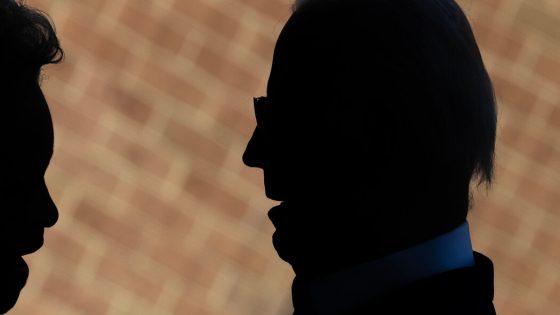Prime Minister Narendra Modi’s coalition led in a majority of seats Tuesday in India’s general election, according to early figures, but faced a stronger challenge from the opposition than expected after it pushed back against the leader’s mixed economic record and polarizing politics.
The counting of more than 640 million votes cast over six weeks in the world’s largest democratic exercise was set to take all day.
Modi was still widely expected to be elected to a third five-year term. If Modi wins, it would cement the 73-year-old as one of the country’s most popular and important leaders. It would only be the second time an Indian leader has retained power for a third term after Jawaharlal Nehru, the country’s first prime minister.
After a historic six-week election, vote counting has begun in India, with many expecting a major win for Narendra Modi, giving him a third consecutive term as the country’s prime minister.
Some seven hours into counting, early leads reported by India’s Election Commission showed Modi’s Bharatiya Janata Party (BJP) was ahead in 236 constituencies and had won two, including one uncontested, of 543 parliamentary seats. The main opposition Congress party, led by Nehru’s great-grandson, Rahul Gandhi, was ahead in 99 constituencies.
Nearly 970 million people — more than 10 per cent of the world’s population — were eligible to vote and turnout averaged 66 per cent, according to official data.
A total of 272 seats are needed for a majority. In 2019, the BJP won 303 seats, up from 282 in 2014 when Modi first came to power.
Modi’s BJP, part of the National Democratic Alliance (NDA), led in 231 constituencies and had won 13, according to the early count. The Congress, part of the INDIA alliance, led in 93 constituencies and had won four.
Markets drop on early returns
The election commission does not release data on the percentage of votes tallied, and early figures were expected to change.
The “Congress party and other opposition parties have showed tremendous resilience. To have a stronger opposition augers very well for India’s democracy that has taken a hit during Modi’s 10-year rule,” said political analyst Rasheed Kidwai.

Exit polling from the weekend had projected the NDA to win more than 350 seats. Indian markets closed sharply down Tuesday, with benchmark stock indices — the NIFTY 50 and the BSE Sensex – both down by more than five per cent.
In his 10 years in power, Modi has transformed India’s political landscape, bringing Hindu nationalism, once a fringe ideology in India, into the mainstream while leaving the country deeply divided. His supporters see him as a self-made, strong leader who has improved India’s standing in the world. His critics and opponents say his Hindu-first politics have bred intolerance and the economy, the world’s fifth-largest and one of the fastest-growing, has become more unequal.
Front Burner34:07Front Burner Presents: Modi’s India, Episode 1
How did Narendra Modi, the son of a humble tea seller rise up the political ranks to become one of the most powerful leaders India has ever seen? And did bloody religious riots damage his political future, or turbocharge it?
This is episode 1 of Modi’s India: Understood. Hosted by Salimah Shivji.
More episodes are available here [https://link.chtbl.com/2SfjGz_1].
‘Not just the prime campaigner’
Modi’s popularity has outstripped that of his party’s, and has turned a parliamentary election into one that increasingly resembles a presidential-style campaign. The result is that the BJP relies more and more on Modi’s enduring brand to stay in power, with local politicians receding into the background even in state elections.
“Modi was not just the prime campaigner, but the sole campaigner of this election,” said Yamini Aiyar, a public policy scholar.
The country’s democracy, Modi’s critics say, is faltering under his government, which has increasingly wielded strong-arm tactics to subdue political opponents, squeeze independent media and quash dissent. The government has rejected such accusations and says democracy is flourishing.
Economic discontent has simmered under Modi. While stock markets reach record-highs and millionaires multiply, youth unemployment has soared, with only a small portion of Indians benefiting from the boom.

The campaign turned increasingly shrill, as Modi ramped up polarizing rhetoric that targeted Muslims, who make up 14 per cent of the population, a tactic seen to energize his core Hindu majority voters. The opposition INDIA alliance has attacked Modi over his Hindu nationalist politics, and campaigned on issues of joblessness, inflation and inequality.
Extreme heat struck India as voters went to the polls, with temperatures higher than 45 C in some parts of the country. Temperatures were somewhat lower on Tuesday for the counting, but election officials and political parties still took precautions, hauling in large quantities of water and installing outdoor air coolers for people waiting for results outside the buildings where votes were being tallied and party headquarters.
Source Agencies




